Winter bed sheets comes in several choices Flannel Sheets, Fleece Sheets, Cotton Sheets with High Thread Count, Microfiber Sheets, Silk Sheets, Wool Sheets, Bamboo sheets.
For winter bed sheets, flannel sheets are a top choice due to their warmth and softness and appears to be one of the most popular sheet choice for Christmas bedroom décor. Microfiber sheets are also excellent as they are warm, durable, and moisture-wicking. Fleece sheets provide ultimate coziness and insulation, perfect for cold winter nights.
Bamboo sheets can be suitable for winter as they offer excellent temperature regulation, keeping you warm without overheating and its ability to draw moisture (such as sweat) away from the skin to the fabric’s outer surface
Wool sheets are an excellent choice for winter as they provide exceptional warmth and insulation. They naturally draw moisture away and allow air circulation, maintaining a comfortable and stable body temperature.. Additionally, wool is hypoallergenic and resistant to dust mites, making it a healthy option for bedding.
Cotton sheets can help in winter by allowing for good airflow, which helps regulate body temperature. This means you won’t overheat during the night, which can lead to a more comfortable sleep. Absorbs moisture, keeping you dry throughout the night.
Graph that visualizes how different types of sheets aid in providing warmer, more comfortable sleep in winter

Here’s a graph that visualizes how different types of sheets aid in providing warmer, more comfortable sleep in winter, while also showing their ability to reduce overheating and sweating:
- Warmth (Salmon bars): Measures how warm each sheet type is, on a scale from 1 to 10.
- Breathability (Skyblue bars): Measures how well each sheet type allows air to circulate, on a scale from 1 to 10.
- Comfort (Lightgreen bars): Measures the overall comfort of each sheet type, on a scale from 1 to 10.
Insights:
- Flannel and Wool sheets are very warm but have lower breathability.
- Fleece sheets provide the most warmth but have the least breathability, which might lead to overheating.
- Microfiber sheets offer a good balance of warmth and breathability.
- Cotton and Bamboo sheets are moderately warm and have high breathability, reducing the chance of overheating.
- Silk sheets offer the least warmth but are highly breathable and comfortable.
This information helps in choosing the right sheet type for a balance between warmth, breathability, and overall comfort during winter.
Flannel Sheets Advantage and Disadvantages In Winter

| Advantages | Disadvantages |
|---|---|
| Excellent insulation and warmth | Can be too warm for some people |
| Soft and cozy feel | May pill over time |
| Durable and long-lasting | Takes longer to dry after washing |
Flannel sheets are a type of bedding made from flannel fabric, which is known for its softness, warmth, and comfort. Here are some detailed aspects of flannel sheets:
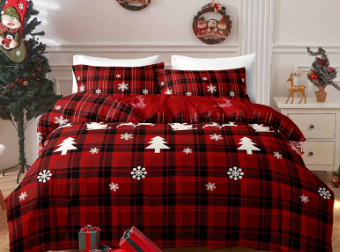
Material
- Fabric: Flannel is usually made from cotton, wool, or synthetic fibers. Cotton flannel is the most common for sheets due to its softness and breathability.
- Weight: The weight of flannel is measured in grams per square meter (GSM) or ounces per square yard. Higher GSM indicates thicker and warmer sheets.
- Brushing: Flannel fabric is brushed on one or both sides to raise the fibers, creating a plush, fuzzy surface that enhances warmth and softness.
Characteristics
- Warmth: Flannel sheets are highly valued for their insulating properties, making them ideal for colder weather. They trap body heat and provide a cozy sleeping environment.
- Softness: The brushing process makes flannel sheets incredibly soft to the touch, offering a luxurious feel.
- Breathability: Despite their warmth, good-quality cotton flannel sheets are breathable, allowing moisture to wick away and keeping the sleeper comfortable.
Types and Varieties
- Cotton Flannel: The most popular type, known for its softness and breathability.
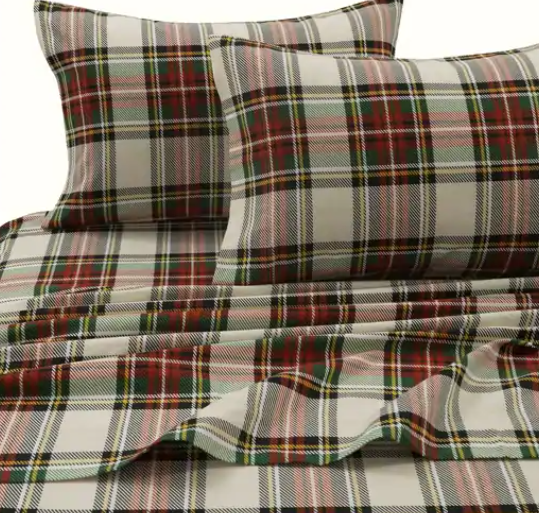
- Wool Flannel: Less common for sheets but provides exceptional warmth, often used in blankets and outerwear.

- Synthetic Flannel: Made from polyester or other synthetic fibers, often more affordable but may not be as breathable as natural fibers.
Care and Maintenance of Flannel sheet
- Washing: Flannel sheets should be washed in cold or warm water with a gentle detergent to maintain their softness and prevent pilling.
- Drying: Tumble dry on low heat to avoid shrinking and preserve the fabric’s integrity. Avoid high heat, which can damage the fibers.
- Storage: Store flannel sheets in a cool, dry place. Avoid compressing them too much to prevent loss of loft and softness.
Benefits
- Comfort: The softness and warmth of flannel sheets provide a comfortable and cozy sleeping experience, especially during winter months.
- Durability: High-quality flannel sheets are durable and can withstand multiple washings without significant wear and tear.
- Variety: Available in various colors, patterns, and sizes to match different bedroom decors and personal preferences.
Things to Considerations when buying flannel sheets
- Pilling: Lower-quality flannel sheets may pill over time, creating small balls of fiber on the surface. Choosing high-quality sheets and proper care can minimize this issue.
- Temperature Sensitivity: While excellent for cold weather, flannel sheets may be too warm for use in hotter climates or during summer months.
Flannel sheets are a popular choice for those seeking a warm, soft, and cozy bedding option during the colder seasons. Their ability to provide comfort and insulation makes them a staple in many households.
Fleece Sheet Advantages and Disadvantages in winter

| Advantages | Disadvantages |
|---|---|
| Extremely warm and comfortable | Can cause overheating |
| Lightweight | Prone to pilling |
| Quick to dry | May not be as breathable |
Fleece sheets are known for their soft, warm, and cozy feel, making them popular during colder months. Here are some details about fleece sheets and what they feel like:
Texture and Feel of fleece
- Softness: Fleece sheets are incredibly soft to the touch, often described as feeling similar to a plush blanket.
- Warmth: They are very warm, providing excellent insulation against cold weather.
- Comfort: The material is gentle on the skin, making it comfortable to sleep on.
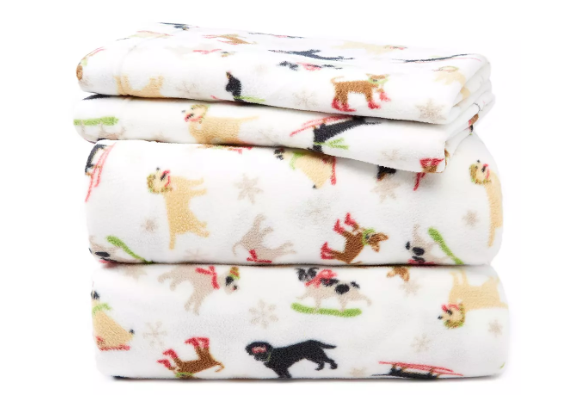
Material Details:
- Fabric Composition: Fleece sheets are typically made from synthetic fibers like polyester. The material is knitted, which gives it a stretchy and flexible quality.
- Weight: Fleece is usually lightweight, but the density can vary. Heavier fleece provides more warmth.
- Breathability: While fleece is warm, it is also breathable, allowing moisture to escape and helping to regulate body temperature.
- Moisture-Wicking: Fleece has good moisture-wicking properties, keeping you dry and comfortable by drawing moisture away from the body.
- Durability: Fleece is generally durable and resistant to pilling, maintaining its softness and appearance over time.
Care Instructions of fleece sheet
- Washing: Fleece sheets are machine washable. It is recommended to wash them in cold water on a gentle cycle.
- Drying: They can be tumble dried on a low heat setting. Avoid high heat, as it can damage the fibers.
- Avoid Fabric Softener: Fabric softeners can reduce the moisture-wicking properties of fleece, so it’s best to avoid them.
Additional Benefits:
- Hypoallergenic: Fleece is typically hypoallergenic, making it a good choice for people with allergies.
- Color Retention: Fleece sheets hold color well, so they remain vibrant even after multiple washes.
Overall, fleece sheets are a great option for those looking for a warm, soft, and comfortable bedding choice during the colder months.
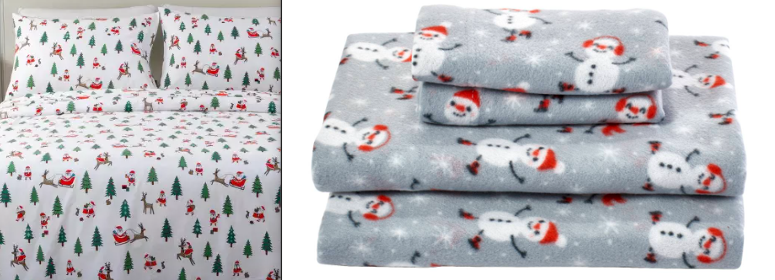
Microfiber sheets texture, durability, care considerations

| Advantages | Disadvantages |
|---|---|
| Affordable and widely available. | Can trap heat, causing overheating. |
| Soft and cozy feel. | Less breathable. |
| Quick-drying and low maintenance. | May attract static and lint. |
Microfiber sheets have become increasingly popular due to their unique combination of texture, durability, and ease of care. Here’s a detailed look at these aspects:
Texture of Microfiber sheets
- Softness: Microfiber sheets are known for their incredibly soft texture, often compared to high-thread-count cotton sheets. This softness comes from the finely woven synthetic fibers.
- Smoothness: The tightly woven fibers give microfiber sheets a smooth, almost silky feel, which many people find comfortable and luxurious.
- Lightweight: They are generally lightweight, adding to the comfort without feeling heavy on the body.
Durability of microfiber sheets
- Strength: Microfiber is made from very fine synthetic fibers, typically polyester or nylon, which are known for their strength and resilience. This makes the sheets highly durable and resistant to wear and tear.
- Resistant to Shrinking and Wrinkling: Unlike natural fibers, microfiber does not shrink or wrinkle easily. This helps the sheets maintain their shape and appearance over time.
- Color Fastness: Microfiber sheets tend to hold dye very well, meaning they are less likely to fade after repeated washing.
Care of microfiber sheets
- Easy to Wash: Microfiber sheets are machine washable and can typically be washed in cold water with a mild detergent. They dry quickly, often making them ready for use soon after washing.
- Low Maintenance: Due to their resistance to wrinkling and shrinking, microfiber sheets require minimal ironing or other maintenance. They are also resistant to stains, making them easier to keep clean.
- Avoid High Heat: It is generally recommended to avoid using high heat settings when drying microfiber sheets, as high temperatures can damage the fibers over time.
Considerations of microfiber sheets
- Breathability: While microfiber sheets are soft and comfortable, they may not be as breathable as natural fibers like cotton. This can make them feel warmer, which might be a consideration for those who sleep hot.
- Static and Cling: Microfiber can generate static electricity, which can cause the sheets to cling. This is often a minor issue but can be bothersome for some people.
Microfiber sheets offer a great balance of comfort, durability, and ease of care. They are an excellent choice for those looking for a low-maintenance, soft, and long-lasting bedding option. However, it’s important to consider personal preferences regarding breathability and warmth when choosing microfiber sheets.
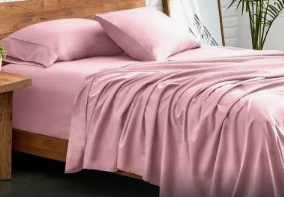
Silk Sheets Winter Advantages and disadvantages, texture

| Advantages | Disadvantages |
|---|---|
| Luxurious and smooth feel | Expensive |
| Hypoallergenic | Requires delicate care and maintenance |
| Good temperature regulation | Can be slippery |
Silk sheets are known for their luxurious feel and several beneficial properties. Here are some important details about silk sheets:
Benefits
- Softness and Comfort: Silk sheets are incredibly soft and provide a smooth, luxurious feel. They are gentle on the skin, making them ideal for people with sensitive skin or allergies.
- Temperature Regulation: Silk is a natural temperature regulator. It helps keep you cool in the summer and warm in the winter, providing a comfortable sleeping environment year-round.
- Hypoallergenic: Silk is naturally hypoallergenic. It resists dust mites, mold, and mildew, which makes it a good choice for people with allergies.
- Moisture-Wicking: Silk can absorb and wick away moisture, which helps keep you dry and comfortable throughout the night.
- Durability: Despite its delicate appearance, silk is quite strong and durable when properly cared for. High-quality silk sheets can last many years.
Types of Silk
- Mulberry Silk: The highest quality silk, known for its long fibers and uniformity. It is the most common silk used for sheets.
- Tussah Silk: Made from wild silkworms, this type of silk has a rougher texture and is less uniform than mulberry silk.
- Charmeuse Silk: A type of weave that gives silk a shiny, reflective surface on one side and a dull finish on the other. Often used in silk sheets for its luster.
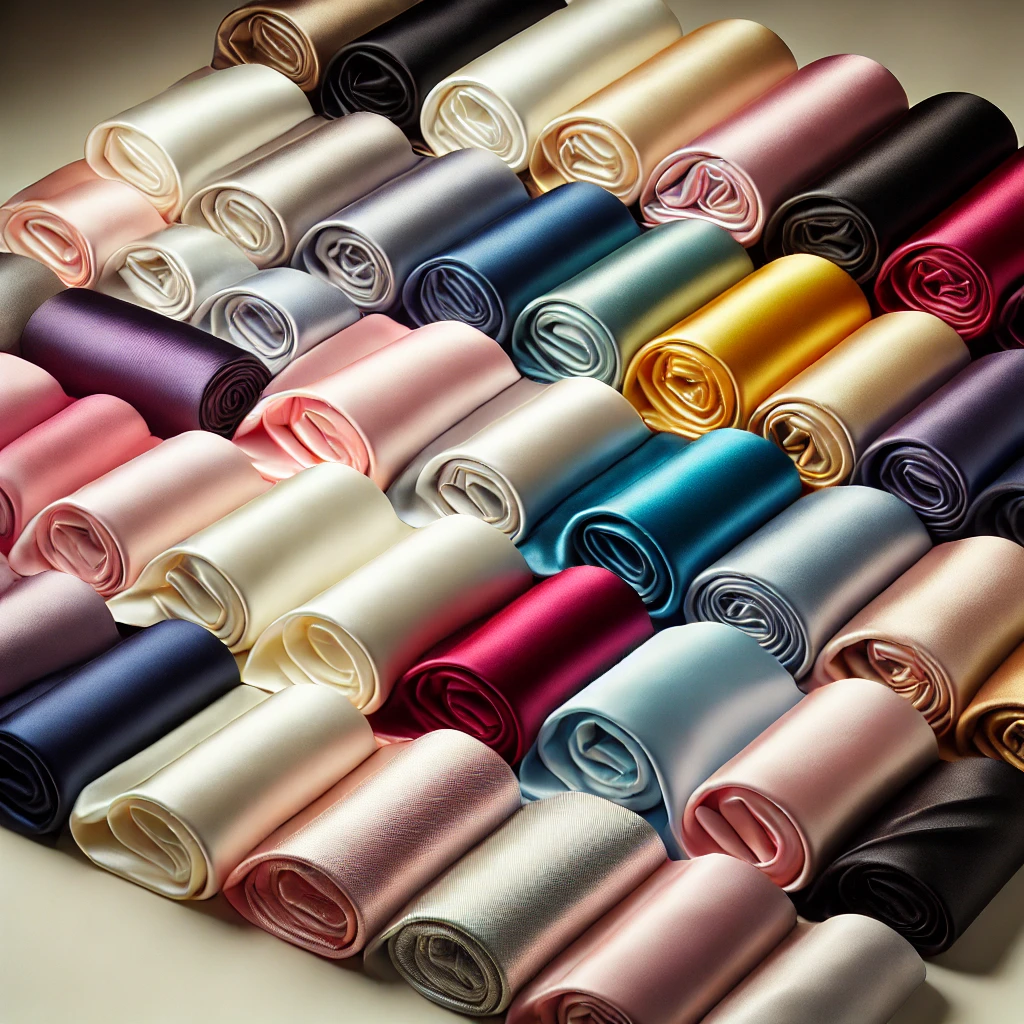
Care Instructions for Silk sheet
- Washing: Hand washing or machine washing on a gentle cycle with cold water and mild detergent is recommended. Avoid bleach and fabric softeners.
- Drying: Air drying is best. If using a dryer, use a low heat setting and remove the sheets while they are still slightly damp to avoid damage.
- Storage: Store silk sheets in a cool, dry place, preferably in a breathable bag to prevent moisture build-up and protect them from dust and pests.
- Ironing: If necessary, use a cool iron on the reverse side of the fabric. Silk sheets generally do not require much ironing as they naturally resist wrinkles.
Considerations
- Cost: Silk sheets are generally more expensive than other types of sheets due to the cost of producing silk and the craftsmanship involved.
- Slipperiness: Silk sheets can be quite slippery, which may take some getting used to.
- Thickness and Weight: Silk sheets can vary in thickness and weight. Thicker silk (measured in momme) is generally more durable and opaque.
Momme Weight for Silk
Momme (mm) is a unit of weight used to measure the density of silk. The higher the momme weight, the thicker and more durable the silk. A momme weight of 19-25 is considered ideal for silk sheets.
Colors and Patterns
Silk sheets come in a variety of colors and patterns. They tend to retain their color well, even after multiple washes, due to the natural properties of silk fibers.
By understanding these details, you can make an informed decision when purchasing and caring for silk sheets to enjoy their luxurious benefits for years to come.
Bamboo sheets Advantages and Disadvantages, texture, care during Winter

| Advantages | Disadvantages |
|---|---|
| Soft and breathable | Can be expensive |
| Eco-friendly and sustainable | May wrinkle easily |
| Naturally hypoallergenic and antimicrobial | Requires specific care instructions |
Bamboo sheets have gained popularity due to their comfort, sustainability, and various beneficial properties. Here are some key details about bamboo sheets:
Key Properties of Bamboo Sheets
- Softness: Bamboo sheets are known for their luxurious softness, often compared to the feel of silk or cashmere.
- Breathability: Bamboo fibers are naturally breathable, which helps regulate body temperature and keeps you cool during hot nights.
- Moisture-wicking: Bamboo sheets effectively wick away moisture, keeping you dry and comfortable throughout the night.
- Hypoallergenic: They are naturally hypoallergenic and resistant to dust mites, making them a great option for people with allergies or sensitive skin.
- Durability: Bamboo sheets are strong and durable, often lasting longer than cotton sheets if properly cared for.
- Eco-friendly: Bamboo is a highly sustainable crop, growing quickly without the need for pesticides or excessive water.
Types of Bamboo Sheets
- Bamboo Viscose (Rayon): The most common type, known for its softness and breathability.
- Bamboo Lyocell: Made using a more environmentally friendly process, these sheets are also soft and durable.
- Bamboo Linen: Less common, these sheets have a more textured feel and are typically more breathable.
When to Use Bamboo Sheets
- Summer and Warm Climates: Due to their excellent breathability and moisture-wicking properties, bamboo sheets are ideal for hot weather and keeping cool.
- Year-round Use: Their temperature-regulating properties also make bamboo sheets suitable for year-round use, providing comfort in both warm and cool seasons.
- For Sensitive Skin: Those with sensitive skin or allergies will benefit from the hypoallergenic nature of bamboo sheets.
- Eco-conscious Consumers: People looking for sustainable and environmentally friendly bedding options will appreciate bamboo sheets.

Care Instructions of bamboo sheets
- Washing: Wash bamboo sheets in cold water on a gentle cycle using mild detergent.
- Drying: It’s best to air dry bamboo sheets, but if you use a dryer, choose a low heat setting.
- Avoid Bleach and Fabric Softener: These can damage the fibers and reduce the softness of the sheets.
By choosing bamboo sheets, you can enjoy a combination of comfort, durability, and environmental sustainability.
Price Range
- Budget Range: $50 – $100
- These sheets are often made from bamboo blends or lower thread counts. They offer some benefits of bamboo but may not be as durable or luxurious as higher-end options.
- Mid-Range: $100 – $200
- Sheets in this range are usually pure bamboo or high-quality bamboo blends. They often have a higher thread count and offer better durability and comfort.
- Luxury Range: $200 – $400+
- High-end bamboo sheets come with high thread counts, superior craftsmanship, and additional features such as OEKO-TEX certification (ensuring no harmful chemicals are used). These are the most durable and luxurious options available.
Factors Influencing Cost
- Material Quality: Pure bamboo sheets are typically more expensive than bamboo blends.
- Thread Count: Higher thread counts generally mean softer, more durable sheets, and they often come at a higher price.
- Brand: Well-known or premium brands tend to charge more for their products.
- Certifications: Certifications like OEKO-TEX or GOTS (Global Organic Textile Standard) can add to the cost but ensure higher safety and environmental standards.
- Weave Type: Different weave types, like sateen or twill, can affect the price. Sateen weaves are often more expensive due to their softness and sheen.
Examples of Brands and Prices
- Cariloha Bamboo Sheets: Around $200 for a queen set.
- Ettitude Bamboo Lyocell Sheets: Approximately $150 – $200 for a queen set.
- Hotel Sheets Direct Bamboo Sheets: Approximately $60 – $90 for a queen set.
- Luxor Linens Bamboo Sheets: Around $180 – $220 for a queen set.
Buying Tips for Bamboo sheet
- Look for Sales: Many retailers offer discounts during sales events, making it possible to purchase high-quality bamboo sheets at a lower cost.
- Check Reviews: Reading customer reviews can help you find the best value for your money.
- Consider Longevity: Investing in higher-quality bamboo sheets may cost more upfront but can save money in the long run due to their durability.
By considering these factors, you can find bamboo sheets that fit your budget while still offering the comfort and benefits you seek.
Wool Sheets winter advantages, Disadvantages, texture, Care, Uses

| Advantages | Disadvantages |
|---|---|
| Extremely warm and insulating | Can be scratchy |
| Naturally moisture-wicking | Expensive |
| Durable and long-lasting | Requires special care and cleaning |
- Wool sheets have a soft and slightly textured feel. They are not as smooth as silk or bamboo sheets, but high-quality wool sheets are designed to be comfortable against the skin.
Care Instructions
- Washing: Wash wool sheets in cold water on a gentle cycle using a wool-safe detergent.
- Drying: Air drying is recommended to maintain the quality of the wool fibers. If using a dryer, select a low heat setting.
- Avoid Bleach and Fabric Softeners: These can damage the wool fibers and reduce the softness and durability of the sheets.
- Storage: Store wool sheets in a cool, dry place, and consider using a breathable storage bag to protect them from moths and other pests.
When to Use wool sheet
- Year-Round Bedding: Due to their temperature-regulating properties, wool sheets are suitable for use throughout the year.
- Allergy-Friendly Bedding: Their hypoallergenic properties make wool sheets a good choice for people with allergies.
- Luxury Bedding: Wool sheets are often used in high-end bedding for their comfort, durability, and eco-friendly attributes.
- Outdoor and Travel Bedding: Wool’s moisture-wicking and temperature-regulating qualities make it a good option for camping or travel bedding.
Wool sheets offer several benefits, including temperature regulation, moisture-wicking, and durability, but they require special care and come at a higher cost. Their slightly textured feel may not be as smooth as other options, but they provide a comfortable and eco-friendly bedding choice.
Cotton Sheets with Higher Thread Count another choice for winter

| Advantages | Disadvantages |
|---|---|
| Soft and smooth texture | May not provide enough warmth on extremely cold nights |
| Breathable and moisture-wicking | Can be more expensive |
| Versatile for different seasons | Takes longer to warm up |
Cotton sheets with a higher thread count can be beneficial in winter for several reasons:
- Warmth: Higher thread count sheets are generally denser and can trap more heat. This makes them warmer and cozier, which is ideal for colder winter nights.
- Softness: Sheets with a higher thread count are often softer and smoother to the touch. This added comfort can enhance the overall sleeping experience, making it more pleasant during the winter when you spend more time in bed.
- Durability: Higher thread count sheets tend to be more durable and resistant to wear and tear. This means they can withstand frequent washing and use throughout the winter season without losing their quality.
- Moisture-wicking: Good quality cotton sheets with a high thread count can wick away moisture effectively, keeping you dry and comfortable. This is particularly useful in winter when indoor heating can cause sweating.
- Breathability: Despite being warmer, high thread count cotton sheets still allow for breathability. This ensures that you stay warm without overheating, maintaining a comfortable sleep environment.
- Luxury Feel: Higher thread count sheets often have a more luxurious feel, which can add to the comfort and coziness of your bedroom during winter, creating a more inviting and relaxing space.
When choosing cotton sheets for winter, aim for a thread count between 300 and 800. This range provides a good balance of warmth, comfort, and durability.
Cotton Sheet Thread Count Table
| Thread Count Range | Best Use & Description |
|---|---|
| 200-300 | Summer or Warm Climates: Lightweight, breathable, and affordable. Suitable for hot or humid conditions. |
| 300-400 | All-Season Use: Balanced warmth and breathability. Ideal for year-round comfort. |
| 400-600 | Fall and Spring: Slightly heavier with increased softness. Great for cooler weather. |
| 600-800 | Winter and Cold Climates: Dense and warm, providing extra coziness. Excellent for cold winter nights. |
| 800+ | Luxury and Cold Winter Use: Extremely soft and durable with a luxurious feel. Best for maximum warmth and comfort. |
Most Popular Christmas Sheets
| Type | Popular Designs |
|---|---|
| Flannel Christmas Sheets | Snowflakes, reindeer, Christmas trees, Santa Claus, festive plaid patterns |
| Microfiber Christmas Sheets | Winter wonderland scenes, snowmen, holiday-themed prints, colorful holiday lights |
| Cotton Christmas Sheets | Candy canes, holly, Christmas ornaments, nutcrackers |
| Jersey Knit Christmas Sheets | Holiday quotes, gingerbread men, whimsical Christmas characters |
| Bamboo Christmas Sheets | Eco-friendly holiday themes, natural winter scenes, minimalist Christmas designs |
10 Commonly asked Questions and Answers
- What are the warmest sheets for winter?
- Flannel and fleece sheets are generally considered the warmest options for winter.
- Are microfiber sheets good for winter?
- Yes, microfiber sheets are good for winter as they are warm and cozy, but they may cause overheating for some people.
- How to prevent pilling on flannel sheets?
- Wash flannel sheets in cold water and avoid high heat drying to reduce pilling. Using a fabric softener can also help.
- Can bamboo sheets be used in winter?
- Yes, bamboo sheets are suitable for winter as they provide good temperature regulation, keeping you warm without overheating.
- Are cotton sheets warm enough for winter?
- Higher thread count cotton sheets can provide adequate warmth, but they may not be as warm as flannel or fleece sheets.
- How to care for silk sheets?
- Silk sheets should be washed in cold water with a gentle detergent and air-dried or tumble-dried on a low heat setting to maintain their quality.
- What are the benefits of wool sheets?
- Wool sheets are extremely warm, moisture-wicking, and durable, making them a great choice for cold winter nights.
- Which sheets are hypoallergenic for winter?
- Silk and bamboo sheets are naturally hypoallergenic and suitable for people with allergies or sensitive skin.
- How to choose the best winter bed sheets?
- Consider factors like warmth, breathability, softness, maintenance, and personal preferences when choosing winter bed sheets.
- Do fleece sheets make you sweat?
- Fleece sheets can cause overheating and sweating for some people due to their excellent heat retention properties.
Resources
https://www.ncbi.nlm.nih.gov/pmc/articles/PMC6723976
https://www.ncbi.nlm.nih.gov/pmc/articles/PMC6723976













